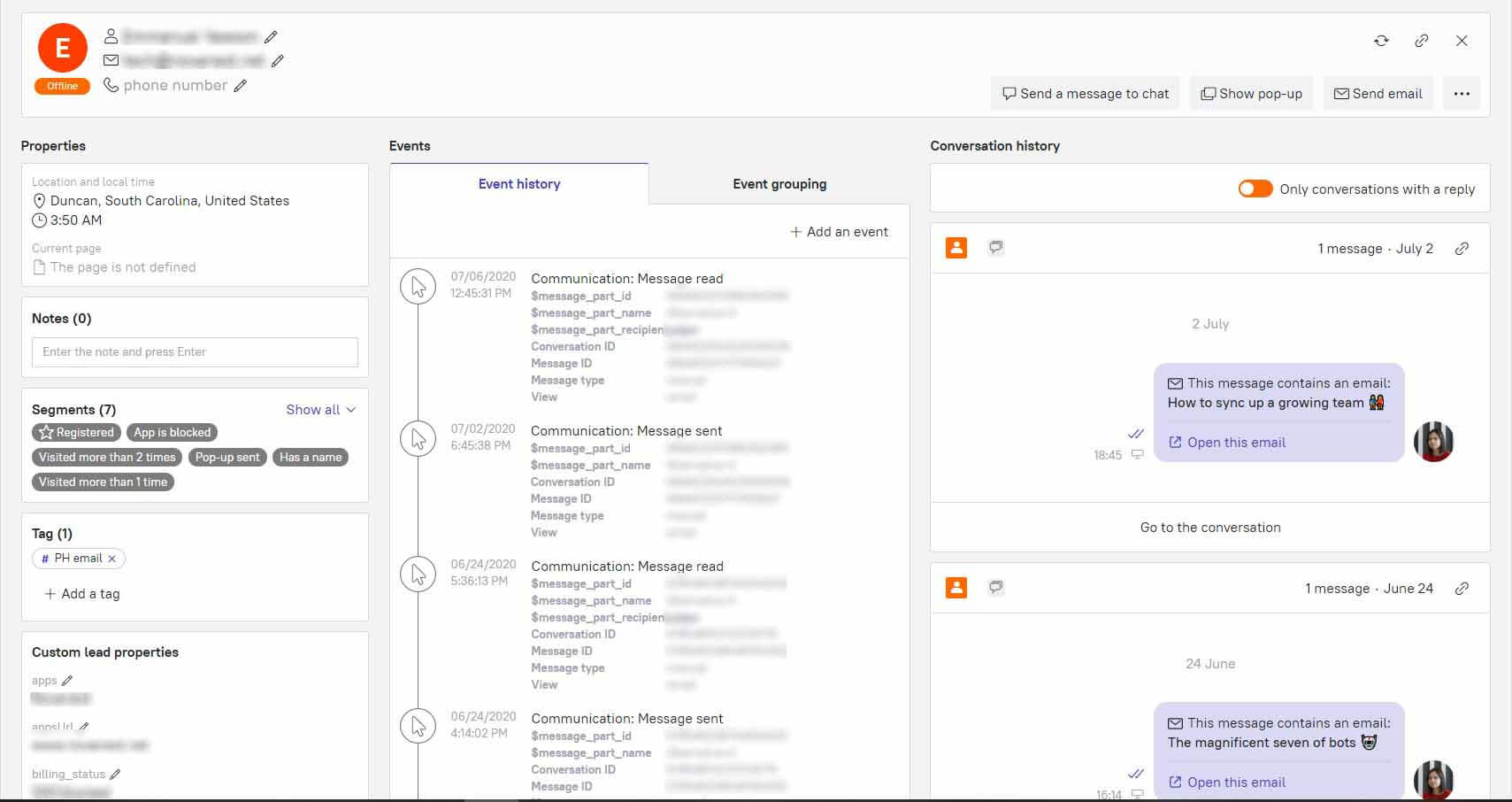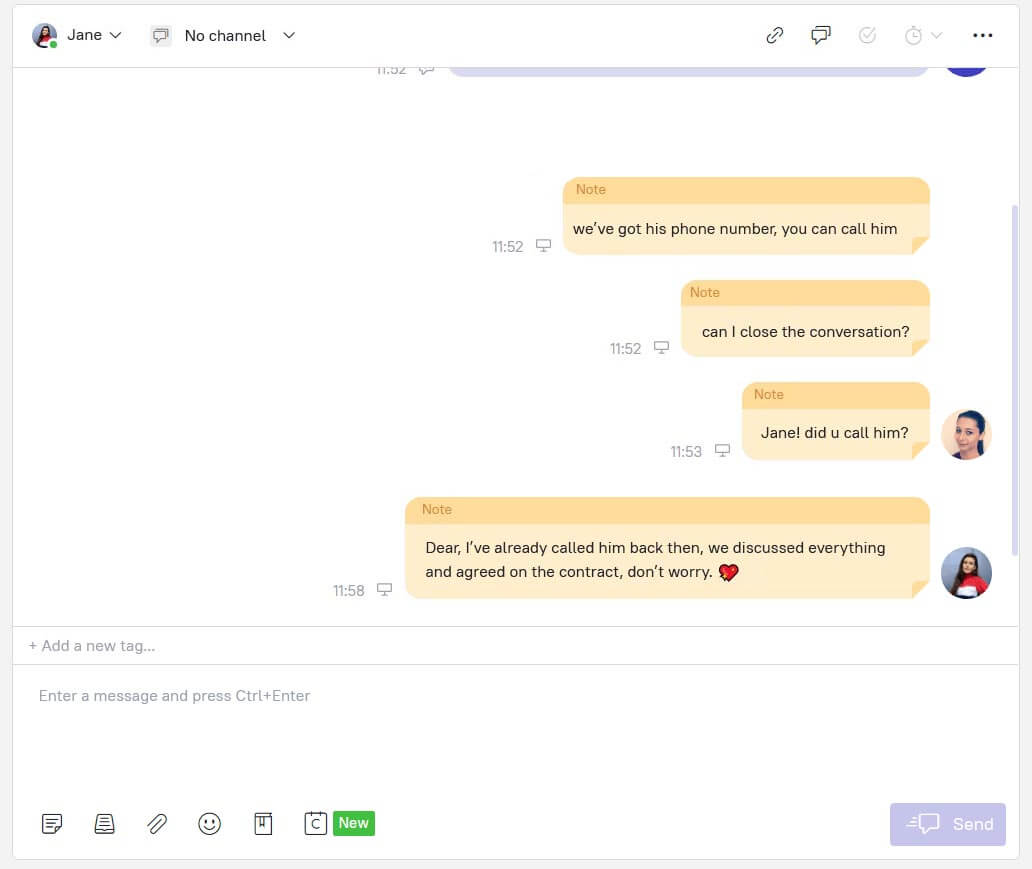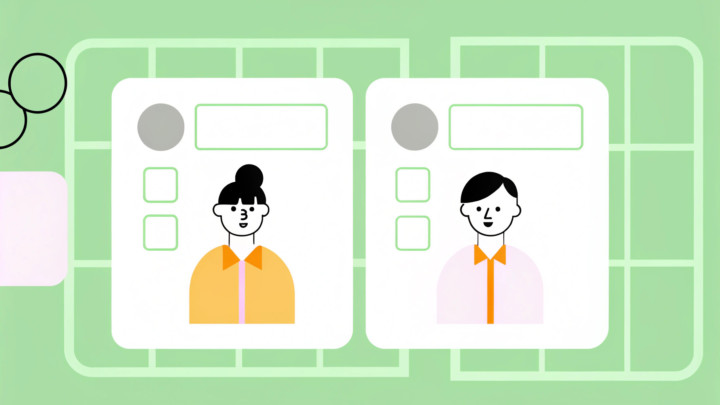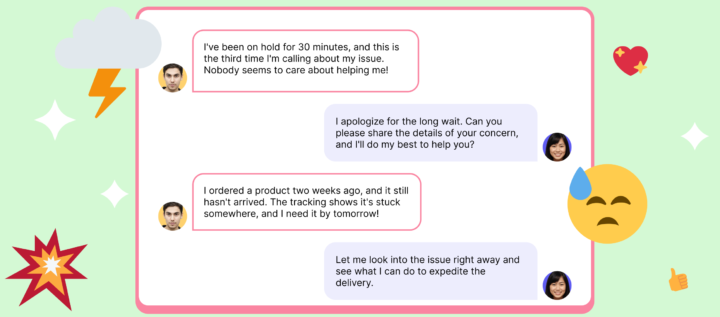How to Make the Customer Support Team More Effective

Quality customer support has always been important, and now it can be your competitive advantage over others. Your customers now have more time to explore various offers before making a purchasing decision, so if you manage to resolve their issues and problems in time, it’s highly likely that customers will choose you.
In this article, we’ll tell you how you can arrange processes and analyze performance and what helpful customer support means.
Episode 1: Synchronization
In this chapter, we’ll tell you how you can help your team perform in a single stream and solve customer problems more efficiently, even if all agents work remotely.
How to distribute requests quickly
Problem: the team receives lots of different requests: problem reports from users, questions from customers regarding terms of contracts, partnership offers. Problems are usually handled by support agents, terms — by account maganers, and the offers are processed by marketing specialists. Anyways, it’s hard to navigate in the ocean of various conversations, and you risk losing track of an important one.
Solution: distribute conversations by channels. It should depend on the user request. It will also make it easier for all teams to handle only those requests that are in their responsibility areas.
In Dashly, you can create and sort channels by various criteria:
- by source, if different agents are responsible for different channels (e.g., requests from a live chat, email and social media);
- by purpose, to make sure requests are handled by those people who are responsible for them (for example, requests for the support team, accounting, and technical teams);
- by subject, so that an agent only sees those requests for they are responsible for.
How not to duplicate someone else’s tasks
Problem: a user request came to support. All agents open it and start typing a response, but someone manages to send it faster. The second agent did extra work and wasted time that they could devote to another customer.
Solution: assign conversations to agents so that everyone knows which of them are already being handled and no one’s tasks are duplicated.
Before replying to a user, an agent must assign a conversation to themselves, so that it doesn’t appear in the list of unsorted conversations for other agents.
You can assign a conversation to yourself pressing Ctrl + M — it’s remembered as “Mine!”
How to organize the support service on weekdays, weekends, and holidays
Problem: you need to understand how to organize the support service on weekdays, whether you need it on weekends and holidays to distribute the team resources correctly.
Solution: this is a particular case; it depends on how often customers use your product, in what time zones they live, and when they contact support the most.
You can base your conclusions on the data from the conversation analytics: look at the number of new calls during the day, on weekends or holidays, and provide support during the busiest periods.
Here’s how it’s organized in Dashly:
We have very few requests at night, so we gave up night shifts, and the working hours on weekends are reduced: the support team is available from 10 AM to 6 PM. On public holidays we check the conversations on checkpoints: at 10 a.m. we check which requests arrived during the night, then at around 3 p.m. and in the evening around 5-6 PM. Agents choose checkpoints as they wish.
Alternatively, while there are no agents in a live chat, you can set up an auto-reply with working hours so that a user understands when they can expect a reply, or set up a chatbot.
How not to skip user requests
Problem: many requests come to support, some of them may get lost and left unanswered.
Solution: only those conversations that are handled should be opened by an agent. This will help your team ensure you don’t miss anything and no resolved conversations get in your workspace.
If you can’t solve the issue right now, it means you need more time to find the information, or you might need help from other teams. In such cases, better postpone the conversation.
How to limit access to other sections
Problem: you need to limit the agents’ access to the platform functionality that is not related to conversations. As a result, they do not accidentally interfere with the work of other specialists.
Solution: different Dashly users may have different access levels: super admins, admins, and agents. Agents can work with conversations, but they won’t be able to see the statistics, send bulk messages, or add other users to the platform.
How to deal with other agent’s conversations
Problem: a request came from a customerю However, it is shown in a conversation that is assigned to an agent who is absent. What should you do?
Solution: for support, the main thing is to solve each user’s problem as soon as possible, so the conversation can be reassigned to any available agent.
There are no other people’s conversations in support. A conversation can be assigned to an agent who is not available when a user is contacting you, and the question still needs to be resolved as soon as possible.
When it comes to sales team conversations, it’s another case: it may not be really nice to intercept other people’s conversations. First of all, it is the relationship between a particular account manager and a particular customer. The best thing you can do is to inform the customer that their message has been received and assigned to another manager and to let them know the approximate response time.
To make sure managers are not tempted to intercept other people’s conversations, Dashly provides an option to block the reassignment of conversations. In this case, only the agent assigned to a conversation can communicate with the customer, while others can only make notes in this conversation.
How to keep the agents informed about the context of the conversation
Problem: a user wrote about their problem to a website live chat, and a couple of days later they asked whether their issue was resolved or not. The agent spends time on clarifying the problem, the user spends time again on explaining what happened.
This case should not cause irritation and user churn. Ideally, they must be endlessly patient. But in life, this doesn’t always happen.
Solution: Dashly stores the entire history of conversations with the user so that agents already know the context — they can read the history of conversations or look at the customer card (which has the detailed info).


How to organize work with other specialists in live chat conversations
Problem: a user contacted you with a complex problem, and you need help from another specialist to solve it. It’s not really convenient if an agent and a specialist have to discuss this problem outside the conversation itself: the context may be lost, you may have to switch between the tabs and so on.
Solution: use notes to communicate with each other in a customer conversation, and the customer won’t see it; you don’t need to switch to other communication channels, and everything will be stored in one place. Plus, there’s no limit on the number of agents in Dashly, so you can send a link with the context of the conversation to any specialist in your company, a sales manager, or even a developer.

How to find all the important information easily
Problem: several agents work in the support team. You need to provide access to the necessary information to all of them (not scattered Google docs of dubious update and relevance).
Solution: gather everything your agents may need in the knowledge base (manuals, basic information, FAQs). Agents will be able to quickly find the right article and send it to the customer, rather than typing the same thing every time or copying from other documents and easily update the information if something changes.
Episode 2: Analytics
Here we’ll show you how you can tell your support team can handle user requests, what bottlenecks there are, and what can be improved.
You can start with three basic support metrics:
First response speed
Obviously, the faster a user gets a response, the better, but you can use these data from the Live Chat Benchmark Report:
| Industry | The first response time (seconds) |
| Business services | 84 seconds |
| eCommerce | 113 seconds |
| Technology | 96 seconds |
Agent rating
This metric will show you how satisfied the user is with the support team. Ask them to rate an agent at the end of the conversation with “bad”, “good” or “excellent”. Pay special attention to conversations where the user is disappointed by something.
The “bad” rating from a user is the red flag meaning something is wrong, and we’re not helping our user.
The “bad” rating from a user is the red flag meaning something is wrong, and we’re not helping our user.
Use the Live Chat Benchmark Report data to interpret the indicators:
| Industry | User satisfaction |
| Business services | 89,47% |
| eCommerce | 86,06% |
| Technology | 90,13% |
Qualitative conversation analytics
You can additionally assess conversations qualitatively as metrics help you get the helicopter view and see major trends, but they miss important points.
You can’t perceive absolute figures, you should always make a qualitative analysis. Users can give the “bad” rating for the product malfunction, not for the agent’s response.
You can’t perceive absolute figures, you should always make a qualitative analysis. Users can give the “bad” rating for the product malfunction, not for the agent’s response.
You can download the records of random conversations of different agents and rate them by the following criteria:
- a user was able to accomplish their task;
- a user is satisfied with the solution;
- the time of resolving an issue;
- an agent addressed the knowledge base or the blog (if that was possible);
- all possible solutions are offered;
- the guidance for success was provided (the user’s next action steps are listed in advance);
- an agent was friendly and delighted;
- the overall conversation rating.
Episode 3: Dream support
What the customer support should be to help users? What opportunities there are that can help the team make the platform better and not just respond in a live chat?
Agents’ personal traits
You can’t arrange quality support solely through well-established processes, rituals, and analytics; many things depend on the people. We think the Soft Skills Starter Pack for an excellent support agent should include the following traits:
- great empathy,
- ability to hear your user and listen to them,
- genuine desire to help,
- ability to complete actions,
- reliability,
- autonomy,
- ability to admit mistakes and correct them,
- willingness to help other agents.
Proactivity
Support agents talk directly to users.They know better than anyone else when users encounter most problems and what should be improved in platform to enhance their user experience. The more stable the platform is and the more intuitive the interface is, the less support a user will need.
You can establish the feedback collection process through:
- user rating: ask users why they give you low rating as this will help you get valuable insights about your product;
- NPS surveys that will show you how satisfied users are with your product and what disappoints them;
- JTBD interviews.
Independent decision-making and problem-solving
Anagent should clearly understand where they can find the necessary information, who they can ask for help and what should they do in each case.
For example, an agent can address the knowledge base or ask their teammates in a special channel if they have little experience or knowledge to respond to a question. If everyone understands what they should do and who they can contact with tough questions, it’ll be easier for the whole team to work.
You can create a bug reports templatesso that your teammates get what you’re talking about.

Sometimes an agent can’t make a decision if there’s no prescribed or established procedure. For example, when a customer is asking for a discount, and an agent cannot take responsibility for such a decision as it requires the approval of other specialists. In Dashly, we welcome the autonomy and encourage agents to talk to customers, clarify all details and come up with a reasonable specific proposal, not questions like “what else can we do for our customer?”.
Handling overload
Sometimes there are situations when the number of support requests becomes several times bigger, and most often they are associated with platform bugs and breakdowns. In such cases, it’s crucial to let users know that they are not left alone with these problems, and that you are ready to help them and do your best to fix them.
During a breakdown, it’s important to maintain the first response speed; the higher it is, the better. You need to push aside all other tasks and focus on communicating with users. First of all, a user in a crisis situation needs to be sure that we know about the problem and are working on fixing it.
What worries users the most is when everything is back in order. Often agents can’t solve problems with the platform, and they need to tell users how much time it will take. The Dashly support and product teams came up with a bug tagging system that helps agents indicate the urgency and severity of the problems:
- PANIC — the problem should be fixed immediately
- URGENT — within a couple of hours
- BY THE END OF THE WEEK
- BY THE END OF THE SPRINT
- DURING THE NEXT SPRINT
Hopefully, great customer support will be your superpower, the analytics will help deal with bottlenecks, and competitors will feel jealous about your professionalism. Cheers!









